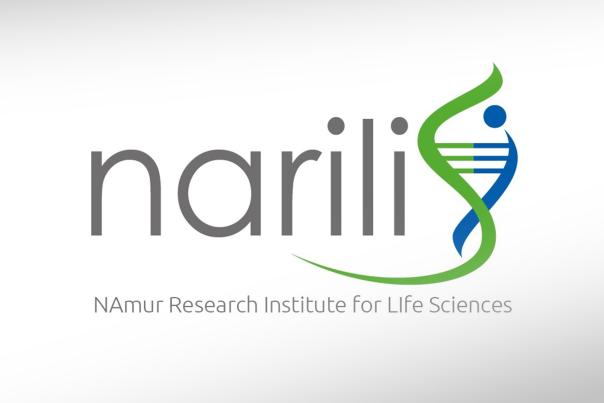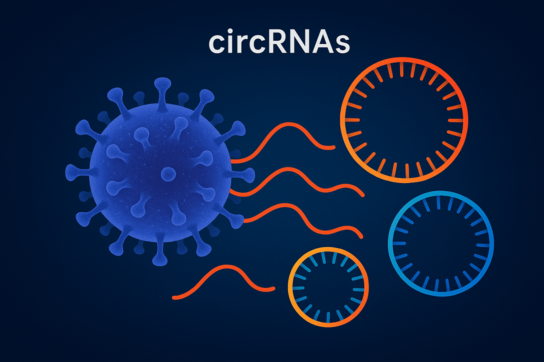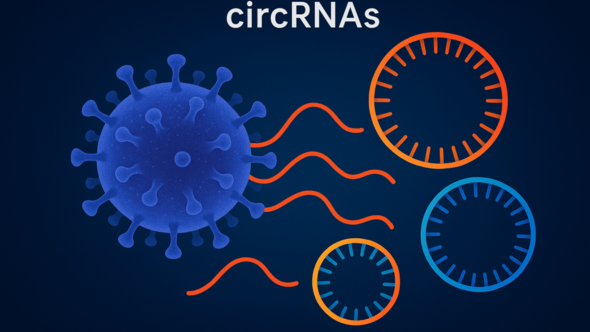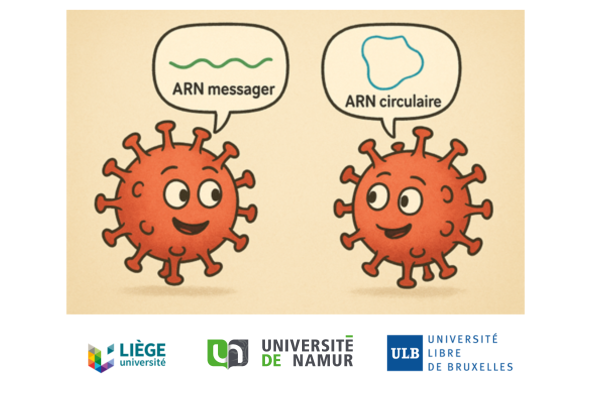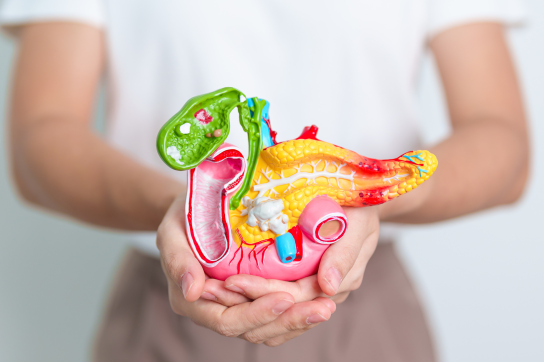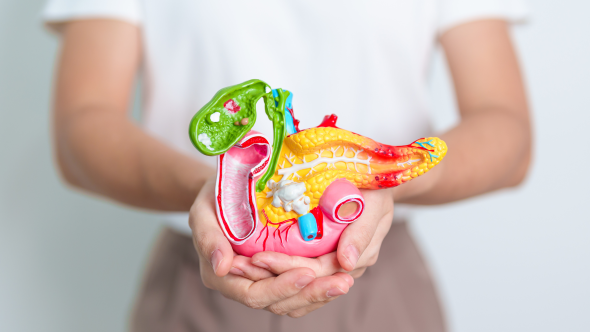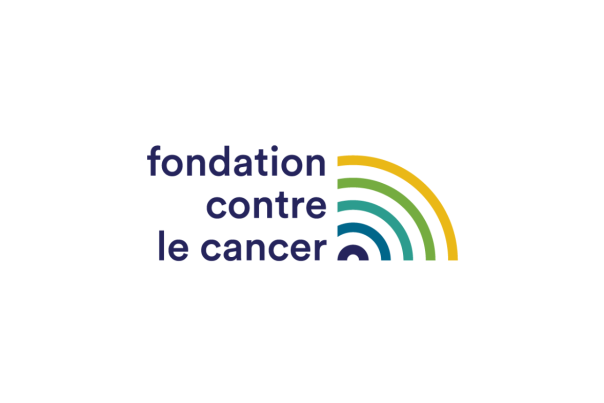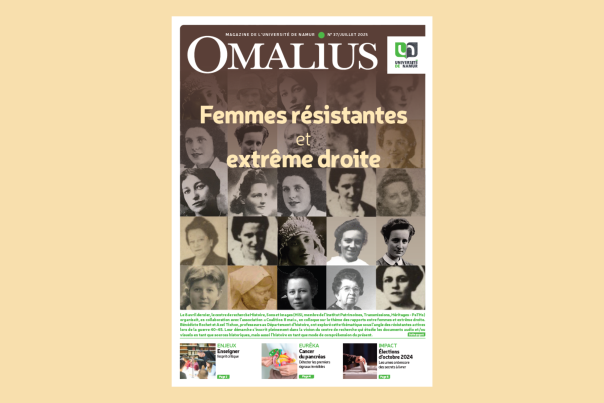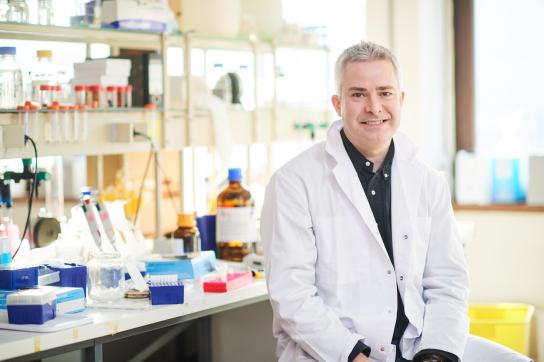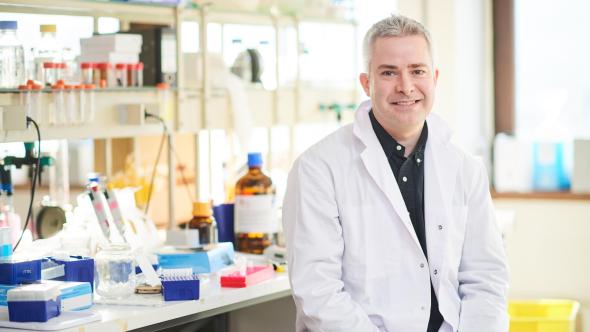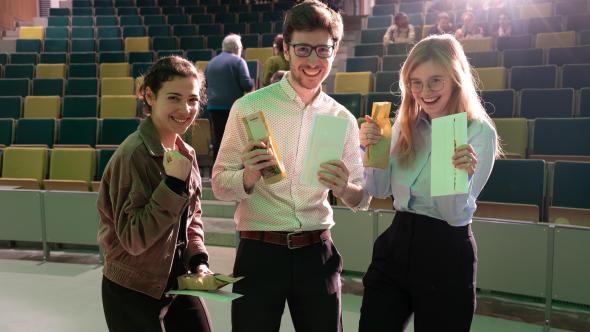NARILIS cherche à stimuler les interactions bidirectionnelles entre les chercheurs fondamentaux et les médecins, et à établir des passerelles entre le laboratoire et le chevet du patient. NARILIS vise donc à faciliter la transposition des résultats de la recherche fondamentale en applications cliniques. Sa mission est de promouvoir la recherche multidisciplinaire afin d'améliorer la santé humaine et animale et la qualité de vie.
Un pont entre la science fondamentale et la médecine
NARILIS est fondé sur un partenariat entre l'UNamur et le complexe hospitalier CHU UCL Namur.
Grâce à ce partenariat, NARILIS favorise les interactions bidirectionnelles entre les chercheurs orientés vers la recherche fondamentale et ceux orientés vers la recherche clinique, et permet d'établir des passerelles entre le laboratoire et le chevet du patient. NARILIS offre ainsi aux scientifiques l'opportunité de mener des recherches qui ont un impact sur la santé, et finalement de participer au transfert des découvertes scientifiques fondamentales vers des applications cliniques.
Recherche multidisciplinaire et collaborative
NARILIS rassemble des scientifiques de diverses disciplines, notamment des biologistes, des physiciens, des chimistes, des géographes, des pharmaciens et des vétérinaires de l'UNamur, ainsi que des professionnels de la santé humaine du CHU UCL Namur. NARILIS encourage les groupes de recherche à passer du cloisonnement à la synergie et à travailler ensemble pour développer des projets innovants.
Six entités de recherche multidisciplinaires ont été créées au sein de NARILIS :
- Namur Thrombosis & Hemostasis Center (NTHC)
- Centre de Médecine et d'Innovation Médicamenteuse de Namur (NAMEDIC)
- Centre de Nanosécurité de Namur (NNC)
- Pôle de recherche en cancérologie de Namur
- Pôle de recherche en infectiologie de Namur (NaRePI)
- Omnibus Animalibus Studia Sanitatis (OASIS)
À la une
Événements
Soutenance publique de thèse de doctorat en Sciences biologiques - Nathalie Leroux
Comparative assessment of estetrol (E4) and 17α-ethinylestradiol (EE2) effects on zebrafish (Danio rerio) metamorphosis.
Abstract
Estrogens originating from human and animal excretion, as well as from anthropogenic sources such as cosmetics, plastics, pesticides, detergents, and pharmaceuticals, are among the most concerning endocrine-disrupting compounds in aquatic environments due to their potent estrogenic activity. While their effects on fish reproduction are well documented, their impact on development, particularly metamorphosis, remains poorly studied. This hormonal transition, mainly controlled by the thyroid axis, is essential for the shift from the larval to the juvenile stage in teleosts.
The effects of two contraceptive estrogens on zebrafish (Danio rerio) metamorphosis were evaluated: 17α-ethinylestradiol (EE2), a synthetic reference estrogen, and estetrol (E4), a natural estrogen recently introduced in a new combined oral contraceptive formulation. Continuous exposure from fertilization to the end of metamorphosis allowed the assessment of morphological changes, disruptions of the thyroid axis, and modifications of additional molecular pathways potentially involved in metamorphic regulation.
EE2 induced significant delays and disturbances in metamorphosis, affecting both internal and external morphological traits, confirming its role as an endocrine disruptor of concern. In contrast, E4 did not cause any detectable morphological alterations even at concentrations far exceeding those expected in the environment, indicating a limited ecotoxicological risk. Molecular analyses showed that EE2 strongly affected thyroid signaling and energy metabolism during metamorphosis, whereas E4 induced only minor transcriptional and proteomic changes.
This study provides the first evidence that EE2 can disrupt zebrafish metamorphosis and highlights the importance of including this developmental stage in ecotoxicological assessments. The results also suggest a larger environmental safety margin for E4, although further research is needed to clarify the mechanisms linking estrogen exposure to metamorphic regulation.
Jury
- Prof. Frederik DE LAENDER (UNamur), Président
- Prof. Patrick KESTEMONT (UNamur), Secrétaire
- Dr Sébastien BAEKELANDT (UNamur)
- Dr Valérie CORNET (UNamur)
- Prof. Jean-Baptiste FINI (Muséum National d’Histoire Naturelle de Paris)
- Dr Marc MULLER (ULiège)
- Prof. Veerle DARRAS (KULeuven)
Soutenance publique de thèse de doctorat en Sciences biologiques - Aishwarya Saxena
Elucidation of the (p)ppGpp-dependent transcriptomic landscape in Caulobacter crescentus.
Abstract
Primarily described as an alarmone, secondary messenger (p)ppGpp, when accumulated, binds to many targets involved in DNA replication, translation, and transcription. In the asymmetrically-dividing a-proteobacterium Caulobacter crescentus, (p)ppGpp has been shown to strongly impact cell cycle progression and differentiation, promoting the non-replicating G1/swarmer phase. Mutations in the major subunits of transcriptional complex, b or b’ subunits, were able to display the (p)ppGpp-related phenotypes even in the absence of the alarmone. We identified that the transcriptional holo-enzyme, RNA polymerase (RNAP) is a primary target of (p)ppGpp in C. crescentus. Furthermore, mutations that inactivate (p)ppGpp binding to RNAP annihilated the (p)ppGpp-related phenotypes and phenocopied a (p)ppGpp0 strain. Our RNAseq analysis further elucidated the changes in the transcriptional landscape of C. crescentus cells displaying different (p)ppGpp levels and expressing RNAP mutants. Since the DNA replication initiation protein DnaA is required to exit the G1 phase, we observed that it was significantly less abundant in cells accumulating (p)ppGpp. We further explored its proteolysis under the influence of (p)ppGpp. Our work suggests that (p)ppGpp regulates cell cycle and differentiation in C. crescentus by reprogramming transcription and triggering proteolytic degradation of key cell cycle regulators by yet unknown mechanisms. In Part II, we identified two σ factors belonging to the ECF family that might be involved in this (p)ppGpp-accompanied phenotypes. In Part III, we propose an overlapping role of the ω subunit, RpoZ, and the heat shock subunit, RpoH, in carbon metabolism.
Jury
- Prof. Gipsi LIMA MENDEZ (UNamur), President
- Prof Régis HALLEZ (UNamur), Secretary
- Dr Emanuele BIONDI (CNRS-Université Paris-Saclay)
- Prof. Justine COLLIER (University of Lausanne)
- Dr Marie DELABY (Université de Montréal)
Le 16/20 de la recherche clinique
L'institut de recherche NARILIS, le CHU UCL Namur et l’UNamur vous invitent à un afterwork unique consacré à la recherche clinique.
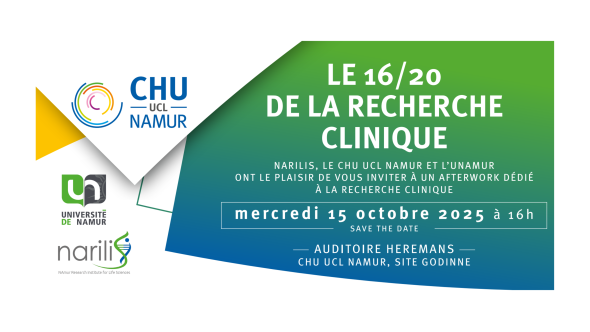
Programme
16:00-18:00 Focus sur sept projets de recherche clinique
Découvrez sept projets innovants portés par des chercheurs namurois :
- Alexandre Goussens | Biofabrication de greffons œsophagiens biocompatibles
- Morgane Canonne | Thérapie innovante pour la leucémie myéloïde aiguë
- Mélanie Lefebvre | IA et diabète : vers une autonomie accrue des patients diabétiques
- Emma Calluy | Exploration des biomarqueurs sanguins liés à la démence
- Jonathan Douxfils | Le test nAPCsr : prévenir les risques de thrombose associés aux contraceptifs oraux
- Delphine Bourmorck | Le rôle des services d’urgence dans les soins palliatifs aux patients âgés
- Eric Mormont | Suicide chez les patients atteints de démence: une revue systématique
18:00-20:00 Session posters et Walking dinner
Un moment convivial d’échanges autour des posters et d’un walking dinner. L'événement se clôturera à 20h par l'annonce des meilleurs présentations poster.
Appel à posters
Tous les (cliniciens)-chercheurs actifs dans la recherche clinique sont invités à soumettre un abstract pour une présentation sous forme de poster. Des prix seront décernés aux meilleures présentations!
Inscriptions
Les inscriptions, avec ou sans soumission d'abstract, sont ouvertes jusqu'au 26 septembre via un formulaire unique.
Des attestations de présence seront délivrées à tous les participants et permettront aux doctorants de faire valider des crédits de formation doctorale.
Une accréditation INAMI est demandée pour les médecins.
Comité organisateur
Prof. Marie de Saint-Hubert, CHU UCL Namur, Service de gériatrie
Prof. Charlotte Beaudart, UNamur, Département des sciences biomédicales, URPC, Public Health Aging Research & Epidemiology (PHARE) Group
Ce contenu est en cours de migration. Retrouvez toutes les informations utiles sur le site web externe de l'Institut Narilis.
